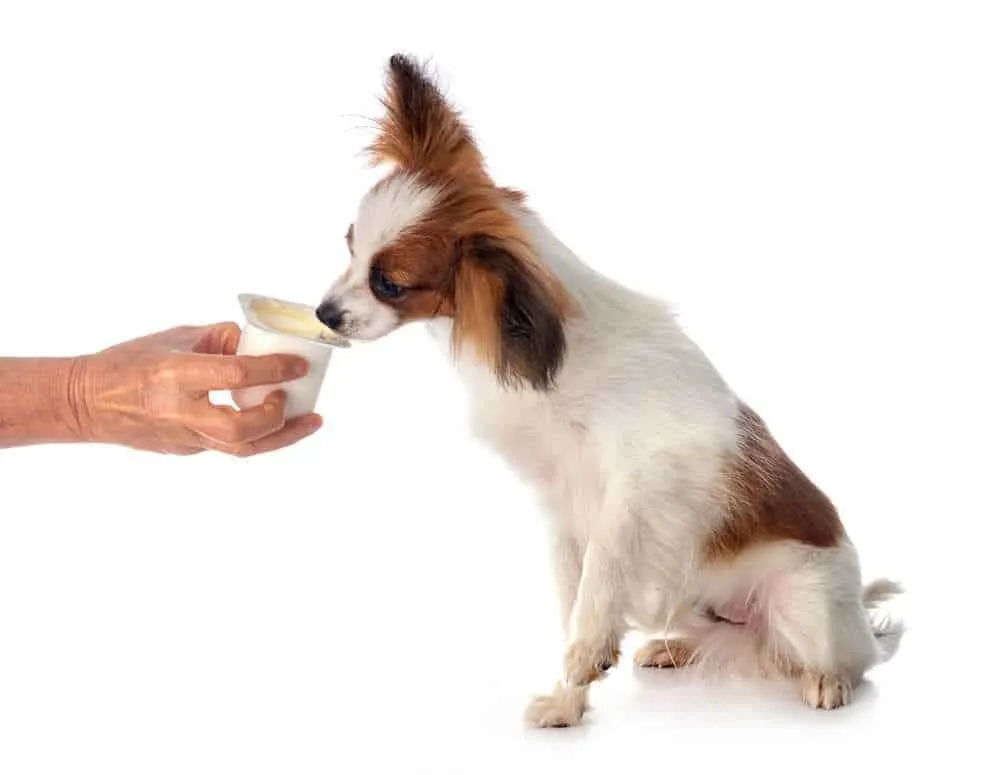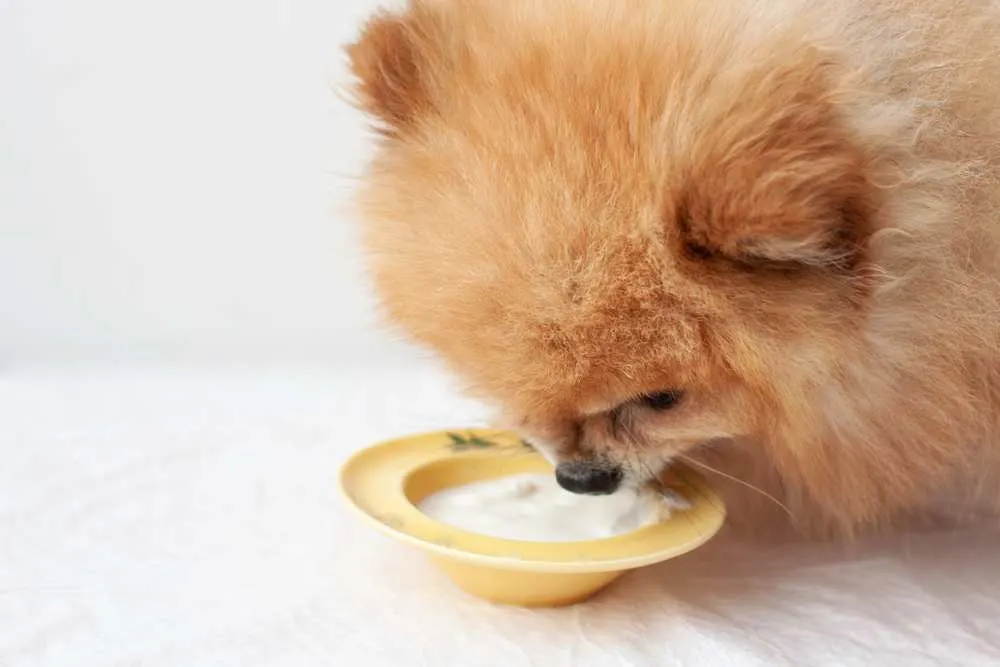Dogs love dairies, such as an occasional bowl of milk, a small cup of ice cream, or even yogurt. The question becomes is it safe for your dog to consume it. Puppies have a different digestive system than adult dogs, so live on high-fat milk.
As dogs grow, their need for protein and calcium does not diminish, but their ability to process dairy lessens. This does not mean that consuming food like yogurt is toxic for dogs, it does mean that you need to know more about how to safely feed it to your pup.

Safety Of Yogurt
Yogurt is a great treat for your dog that is packed with both protein and calcium, but not all types of yogurt are safe for consumption. When shopping for yogurt to feed your canine, you will want to look for plain, non-fat yogurt that is free of sweeteners and preservatives.
An artificial sweetener that is commonly found in yogurt is xylitol and that is extremely toxic for dogs. This sweetener is known to cause liver cancer or failure due to the inability to process it. While there are many fruits that are found in yogurts that are safe for dogs, they often are packed with xylitol so avoid all mixed yogurts.

Types Of Yogurt
The best yogurt to purchase for your dog is Greek yogurt. It is naturally free of xylitol, but you will need to make sure you still buy the plain flavor. Greek yogurt is much thicker than regular because it has had the whey strained out. This makes it more preferable to a dog’s palate and easier to mix into their kibble without making it taste soggy.
If it is summertime, you may consider opting for frozen yogurt. This is generally found in the ice cream aisle and is a nice cold treat for your pup on hot days. If you struggle to find frozen yogurt without additives in it, you can always freeze plain or Greek yogurt and feed it to your dog.

How Much Yogurt You Should Feed To Your Dog?
Before you can decide how much yogurt your dog can safely eat a day, you need to decide if you are wanting it as a treat or part of their diet. If you are considering adding yogurt into the diet, talk to your veterinarian. Your vet will make the determination based on your dog’s size, weight, any current health conditions, activity level, and other dietary needs.
However, if you are only looking at an occasional treat, make sure the calories in the yogurt do not exceed ten percent of your dog’s daily caloric need. On a general basis, you can safely add a tablespoon of yogurt to one of your dog’s meals without running into complications. It is important to discuss with your veterinarian a long-term plan so he or she can assist you with reading the nutritional label and apply it to your pet’s needs.
Benefits Of Yogurt
Yogurt is full of probiotics that are good for your dog, especially if they are currently on an antibiotic killing all the bacteria in their body (including the good bacteria). However, if you are wanting the yogurt for the probiotics, you will need to feed more than ten percent of their caloric intake. Having them on a daily treat will benefit them with additional calcium, magnesium, and potassium. Yogurt also assists with the absorption of B12, giving your dog natural energy. If you are needing it for probiotic reasons, talk to your veterinarian about adding yogurt in greater quantities during the round of antibiotics. Finally, when using it to assist with antibiotics, have your pup eat the yogurt several hours prior to taking medication so the calcium does not interfere with the antibiotics.
Hazards Of Feeding Yogurt
Even the healthiest of foods is not for every person, and the same is for dogs. Dogs can struggle with digesting dairy products, and yogurt falls in that category. Dairy products, after dog’s age out of the puppy metabolism, can cause pups to suffer from gas and diarrhea. Your dog may vomit if you introduce too much yogurt into their diet too fast. As you introduce yogurt to your dog, watch for any lack of appetite, abdominal discomfort, excessive itching, or sudden weight loss. If any of these symptoms are noticed, stop giving your dog the new food immediately and contact your veterinarian. Finally, if you have any fears of your dog not being able to process the lactose found in dairy products, consider starting with Greek yogurt first due to the lesser amounts of lactose in it.

How To Feed Yogurt?
Once you have determined that your dog can safely consume yogurt, you will need to know the best way to feed it to them. When starting, go slowly and consider offering your pup this delicious treat once a week. Smaller dogs will only need a tablespoon, but larger dogs can tolerate up to three tablespoons in their dry food.
This is the best way to introduce the treat unless you are making frozen yogurt cubes. Whether you are using dry kibble or canned food, you can mix the yogurt into their meal. The yogurt will stick to the dry kibble, and your dog will likely lick the bowl clean.
However, it will be vital after every feeding with dairy involved, you wash the dish with soap and water to prevent harmful bacteria from growing and making your dog sick. It is safe to mix into the dog’s food at every meal, but make sure your dog can tolerate it by slowly increasing the number of feedings you present it at.
If you want to offer the yogurt as a treat on the side in frozen form, consider using a designated ice cube tray. You can then freeze single serving sizes and know exactly how much your pup is getting per day.
Yogurt is found in many forms, including fat-free, so with your veterinarian’s assistance, you can find the best type for your pet. There are many benefits, so not only is this food safe for your pup, it is a great decision to include it in their diet.
Learn More: What Can Dogs Eat? A Comprehensive List Of Dog-safe Foods

